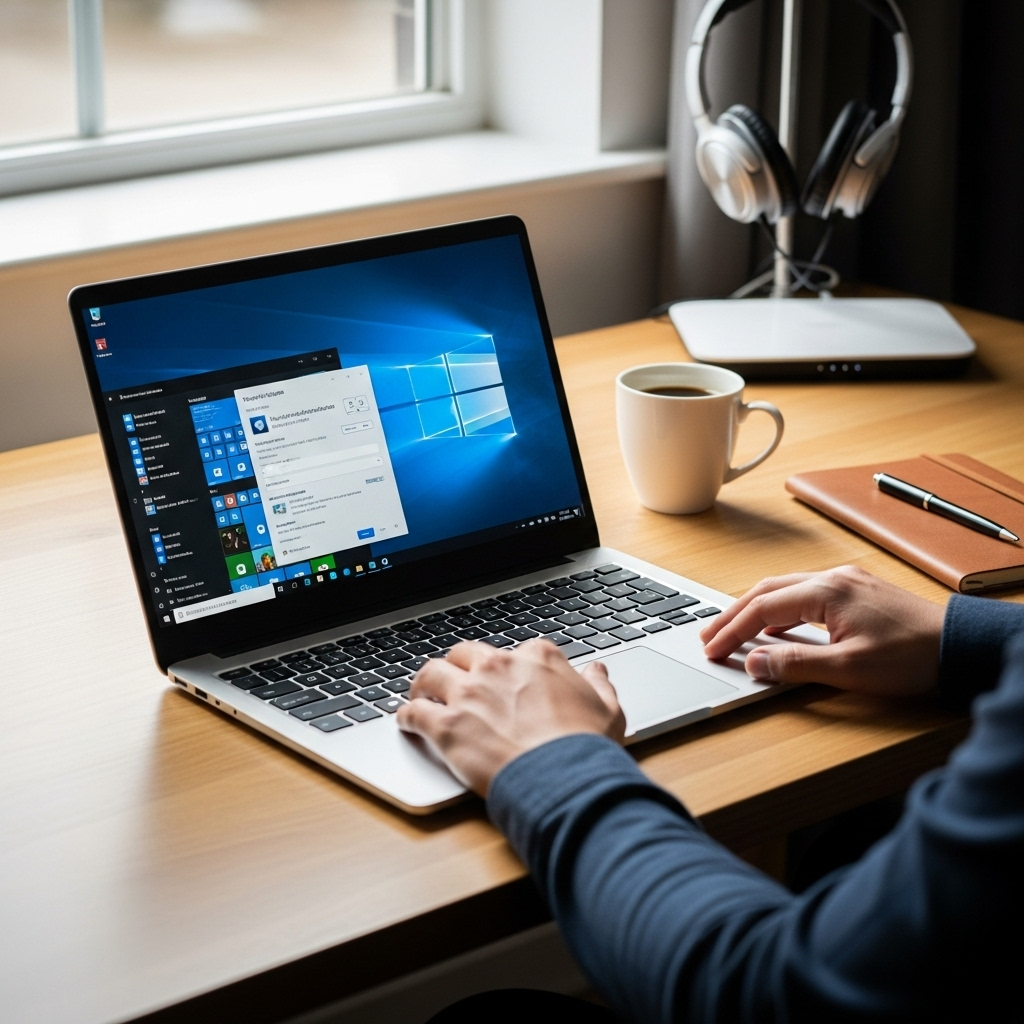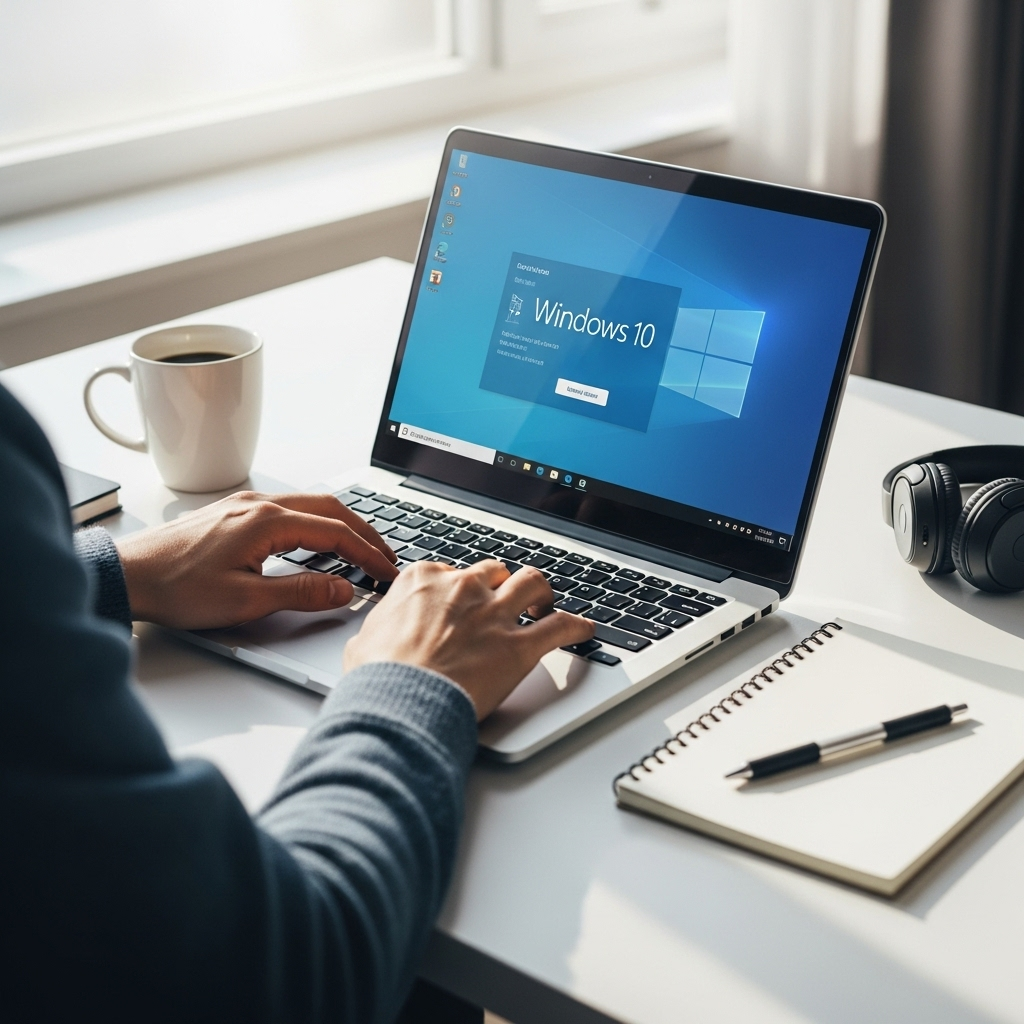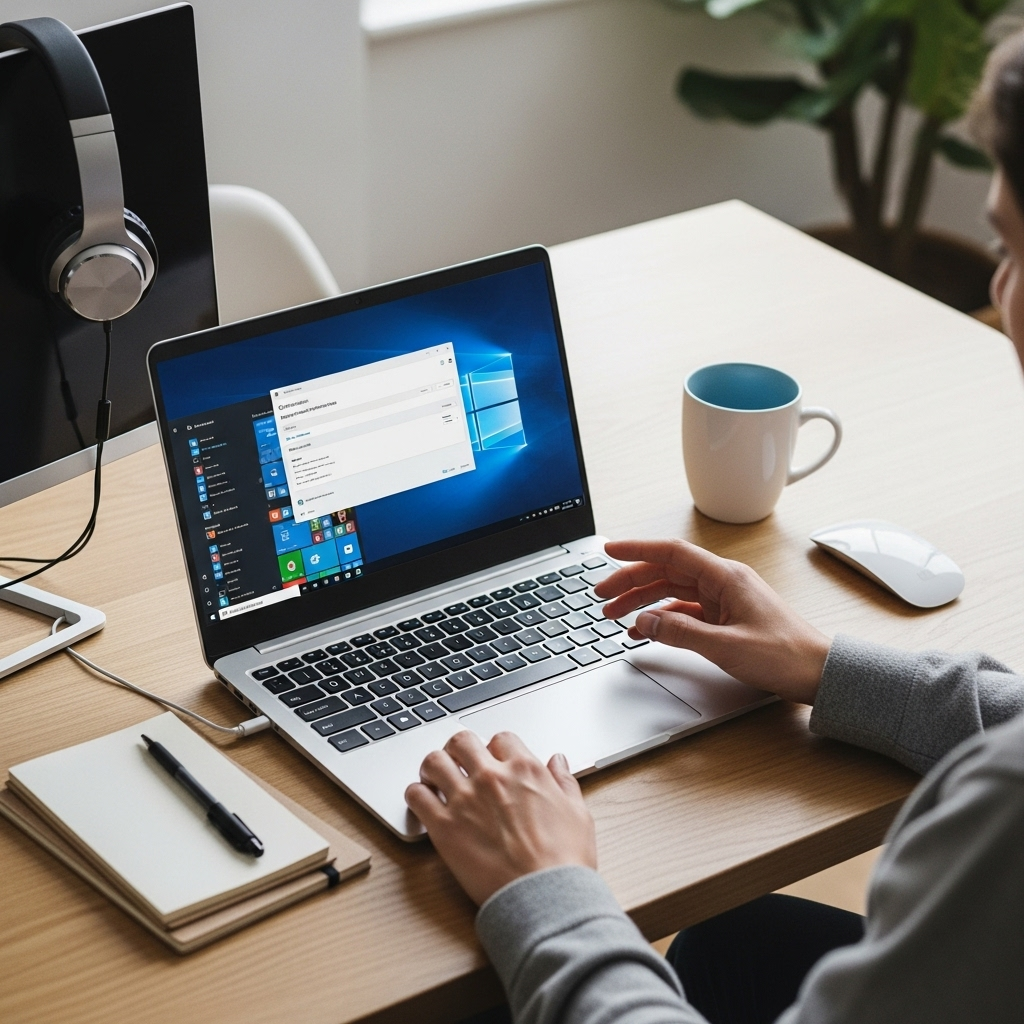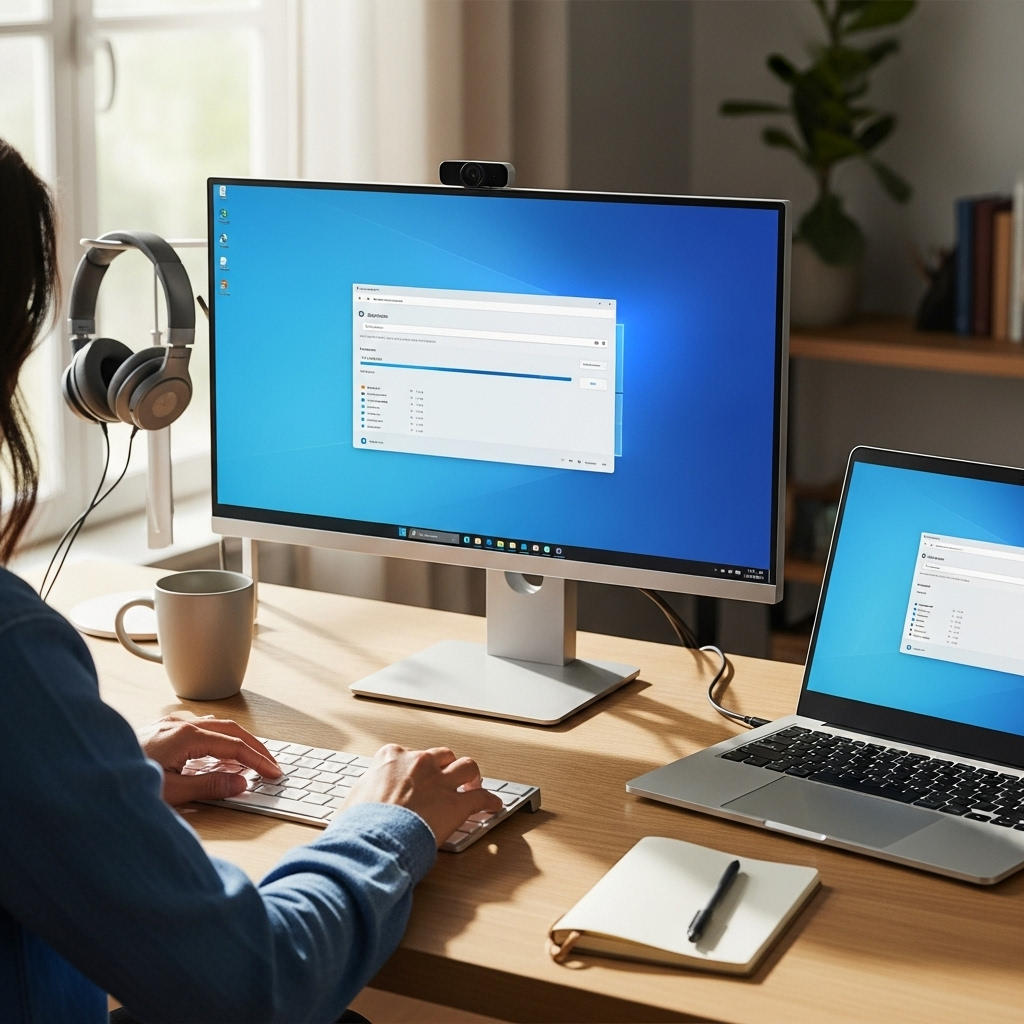<h1>Mozilla Download for Windows 10: Your Essential Guide by Mike Bentley</h1>
<p><strong>Quick Summary:</strong> Easily <strong>download Mozilla Firefox for Windows 10</strong> by visiting the official Mozilla website. This guide provides simple, step-by-step instructions to get the latest, secure version of Firefox on your PC, ensuring a smooth and safe browsing experience.</p>
<h2>Welcome, Windows 10 Explorers! Let’s Get Firefox Installed</h2>
<p>Are you looking to spice up your internet browsing experience on your Windows 10 computer? Maybe you’ve heard great things about Mozilla Firefox – its speed, its privacy features, or its flexibility. But sometimes, just getting a new piece of software seems like a big hurdle. You might worry about downloading the wrong file, missing a crucial step, or even opening the door to security risks. Don’t worry, I’m Mike Bentley, and I’m here to make things super simple! This guide will walk you through downloading and installing Mozilla Firefox on your Windows 10 machine, step-by-step. We’ll make sure you get the official, safe version and get you browsing in no time. Ready to get started?</p>
<h2>Why Choose Mozilla Firefox?</h2>
<p>Before we dive into the download, let’s chat about why Firefox is a popular choice for many Windows users. It’s not just another browser; it’s built with you in mind. Here’s what makes it stand out:</p>
<h3>Privacy First</h3>
<p>In today’s world, keeping your online activity private is more important than ever. Firefox is renowned for its strong privacy features. It actively blocks trackers that follow you around the web, giving you more control over your personal information. This means less targeted advertising and a more secure feeling while you surf.</p>
<h3>Customizable Experience</h3>
<p>Your browser should feel like yours. Firefox lets you customize its look and feel with themes and extensions. Want to block ads automatically? There’s an extension for that. Need a tool to save web articles for later? Yep, there’s an extension for that too. You can tailor Firefox to perfectly suit your needs and browsing habits.</p>
<h3>Speed and Performance</h3>
<p>Nobody likes a slow browser. Firefox has been continuously optimized for speed. It loads pages quickly and handles multiple tabs without breaking a sweat, making your online tasks much more efficient.</p>
<h3>Security Updates</h3>
<p>Mozilla is committed to keeping its users safe. Firefox receives regular security updates that patch vulnerabilities and protect you from emerging online threats. This proactive approach is crucial for maintaining a secure digital life.</p>
<h2>Getting Started: What You’ll Need</h2>
<p>You don’t need to be a tech wizard to download Firefox. All you really need is:</p>
<ul>
<li><strong>A working internet connection:</strong> To download the installer, of course!</li>
<li><strong>Your Windows 10 PC:</strong> This guide is tailored for it.</li>
<li><strong>Your preferred web browser (currently):</strong> You’ll need this to visit the download page. It could be Microsoft Edge, Google Chrome, or another browser you already have installed.</li>
</ul>
<h2>The Easiest Way to Download Mozilla Firefox for Windows 10</h2>
<p>The safest and most straightforward way to get Firefox is directly from the official Mozilla website. Avoid downloading from third-party sites, as they might bundle unwanted software or even malware. Let’s get the real deal!</p>
<h3>Step 1: Open Your Current Browser</h3>
<p>Click on the icon for your current web browser (like Microsoft Edge or Google Chrome) on your Windows 10 desktop or taskbar. This will open up the browser window.</p>
<h3>Step 2: Go to the Official Mozilla Firefox Download Page</h3>
<p>In the address bar at the top of your browser window, type the following web address and press Enter:</p>
<p><strong>https://www.mozilla.org/firefox/download/</strong></p>
<p>This will take you directly to the official download page for Firefox. You should see a big, blue download button, usually saying something like “Download Firefox.”</p>
<h3>Step 3: Download the Installer</h3>
<p>On the download page, you’ll likely see a button that automatically detects your operating system (Windows 10) and offers the correct version. Click that big blue download button!</p>
<p>Your browser will then start downloading a small file, often called something like <code>Firefox Installer.exe</code>. You might see a download progress bar, usually at the bottom or top of your browser window. Wait for this download to complete. You can usually find downloaded files in your “Downloads” folder, which is accessible through File Explorer.</p>
<h3>Step 4: Run the Installer</h3>
<p>Once the download is finished, you need to run the installer file. You can usually do this in a few ways:</p>
<ul>
<li><strong>Click the downloaded file directly:</strong> If you see the file appear at the bottom of your browser window, you can often click on it directly to start the installation.</li>
<li><strong>Open your Downloads folder:</strong> If you don’t see the file at the bottom of your browser, open File Explorer (the folder icon on your taskbar), navigate to the “Downloads” folder on the left-hand side, and find the <code>Firefox Installer.exe</code> file. Double-click it.</li>
</ul>
<h3>Step 5: Follow the On-Screen Prompts (It’s Easy!)</h3>
<p>When you run the installer, a new window will pop up. Windows 10 might ask for your permission to allow the app to make changes to your device – this is a standard security step. Click “Yes” to proceed.</p>
<p>The Firefox installer is very user-friendly. It will usually start automatically and install Firefox with its default settings, which are already excellent. You just need to wait for the progress bar to complete. This typically takes only a minute or two.</p>
<h3>Step 6: Launch Firefox</h3>
<p>Once the installation is finished, Firefox is usually set to launch automatically. If it doesn’t, you can find its icon on your desktop or in the Start Menu. Click on it, and voilà! Your new Firefox browser will open, ready for you to explore the web.</p>
<h2>First Steps with Your New Firefox Browser</h2>
<p>Congratulations, you’ve successfully downloaded and installed Mozilla Firefox on your Windows 10 PC! Now that it’s open, you might see a welcome screen. Here are a few things you can do right away:</p>
<h3>Setting Firefox as Your Default Browser</h3>
<p>If you want Firefox to be the browser that opens automatically when you click on web links, you can set it as your default. Firefox will usually prompt you to do this when you first open it. If not, you can change it in Windows 10 settings. Here’s how:</p>
<ol>
<li>Open <strong>Settings</strong> in Windows 10 (click the Start button, then the gear icon).</li>
<li>Click on <strong>Apps</strong>.</li>
<li>Click on <strong>Default apps</strong> in the left-hand menu.</li>
<li>Scroll down to the “Web browser” section. You’ll see your current default browser listed.</li>
<li>Click on the current default browser, and a list of installed browsers will appear. Select <strong>Firefox</strong>.</li>
</ol>
<h3>Importing Bookmarks and Settings</h3>
<p>Used another browser before? Firefox makes it easy to bring your favorite websites (bookmarks) and settings over. When you first launch Firefox, it might offer to import these from another browser. If not, you can usually find this option in Firefox’s settings menu (click the three horizontal lines in the top-right corner, then “Settings,” and look for an “Import” option).</p>
<h3>Exploring Extensions and Add-ons</h3>
<p>Want to add more power to your browser? Firefox has a vast library of extensions (also called add-ons). These are small programs that add new features. To find them, click the menu button (three horizontal lines), then select “Add-ons and themes.” You can search for everything from ad blockers to password managers.</p>
<h3>Keeping Firefox Up-to-Date</h3>
<p>One of the best things about Firefox is that it usually updates automatically in the background. However, it’s good to know how to check manually. Click the Firefox menu button (three horizontal lines), go to “Help,” and then select “About Firefox.” Firefox will automatically check for updates and install them if available. This is crucial for security!</p>
<h2>Troubleshooting Common Download and Installation Issues</h2>
<p>While the Firefox download and installation process is smooth sailing for most, sometimes a small hiccup can occur. Here are a few common issues and how to fix them, easily:</p>
<table>
<caption>Common Firefox Download & Installation Problems and Solutions</caption>
<thead>
<tr>
<th>Problem</th>
<th>Possible Cause</th>
<th>Solution</th>
</tr>
</thead>
<tbody>
<tr>
<td>Download won’t start or is very slow</td>
<td>Unstable internet connection; browser settings blocking downloads;</td>
<td>Check your internet connection. Restart your router. Try downloading again. Ensure your browser isn’t blocking the download.</td>
</tr>
<tr>
<td>Installer file (.exe) is not recognized or won’t open</td>
<td>Corrupted download; Antivirus blocking the file;</td>
<td>Delete the downloaded file and download it again from the official site. Temporarily disable your antivirus during download and installation (remember to re-enable it afterward).</td>
</tr>
<tr>
<td>Installation fails with an error message</td>
<td>Insufficient disk space; System file issues; Permissions problems;</td>
<td>Free up disk space on your C: drive. Restart your PC and try installing again. Ensure you have administrator rights on your computer.</td>
</tr>
<tr>
<td>Firefox doesn’t launch after installation</td>
<td>Conflicting software; Corrupted installation;</td>
<td>Restart your PC. Try running the installer again. If issues persist, you might need to uninstall and reinstall Firefox.</td>
</tr>
</tbody>
</table>
<h3>Tip: Always Download from the Official Source!</h3>
<p>I can’t stress this enough: always go to <a href=”https://www.mozilla.org/firefox/download/” target=”_blank” rel=”noopener noreferrer”>mozilla.org</a> for your Firefox downloads. This is your best defense against malware and unwanted extra software. It’s like buying groceries from a trusted store instead of a sketchy street vendor – you know you’re getting the good stuff.</p>
<h3>Tip: Using Windows Troubleshooters</h3>
<p>Windows 10 has built-in troubleshooters that can help fix common program installation and update problems. If you’re having persistent issues, search for “Troubleshoot settings” in the Windows search bar and look for relevant troubleshooters, such as “Program Compatibility Troubleshooter.” Sometimes, letting Windows help can solve tricky problems.</p>
<h2>Security Best Practices for Browsing on Windows 10</h2>
<p>Now that you have Firefox installed, let’s talk about staying safe online. A secure browser is your first line of defense. Here are some essential tips to keep your Windows 10 browsing secure:</p>
<h3>1. Enable Firefox’s Built-in Security Features</h3>
<p>Firefox does a lot of the heavy lifting for you. Ensure that Enhanced Tracking Protection is enabled (it is by default!). You can check this by clicking the shield icon to the left of the website address in the address bar. It tells you what Firefox is blocking.</p>
<h3>2. Keep Your Browser and Windows Updated</h3>
<p>As we’ve covered, Firefox updates itself frequently to patch security holes. It’s equally vital to keep Windows 10 updated. Go to <strong>Settings > Update & Security > Windows Update</strong> and click “Check for updates.” Security updates are released regularly by Microsoft to protect your system from vulnerabilities.</p>
<p>For more information on Windows updates, you can visit the official Microsoft support page: <a href=”https://support.microsoft.com/en-us/windows/update-windows-3c5ae7fc-9a92-41b7-9bb3-d300f7f72302″ target=”_blank” rel=”noopener noreferrer”>Microsoft Support on Windows Updates</a>.</p>
<h3>3. Be Wary of Phishing Attempts</h3>
<p>Phishing is when attackers try to trick you into giving them sensitive information (like passwords or credit card details) by pretending to be a legitimate company or person. Look out for suspicious emails, messages, or websites asking for personal information. Firefox




